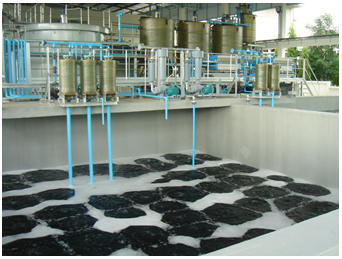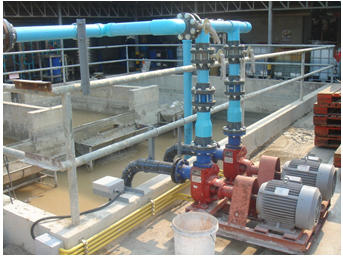Wastewater Treatment
ระบบบำบัดน้ำเสีย ระบบกำจัดไขมัน และน้ำมัน ระบบบำบัดน้ำเสียด้วยวิธีทางเคมี (Chemical Treatment System) ระบบบำบัดน้ำเสียด้วยวิธีทางชีวภาพ (Biological Treatment System)
Equalization Tank
Flow equalization is method used to overcome the operational problems and flow rate variations to improve the performance of downstream processes and to reduce the size & cost of downstream treatment facilities. To prevent flow rate, temperature, and contaminant concentrations from varying widely, flow equalization is often used.
Variations occur characteristically in domestic wastewater flow rate and composition as a result of cyclic activities of the human population. Additional variations are commonly imposed by a combination of:
- Random and cyclic activities in the collective industrial-wastewater-generating segment of the community and
- By storm-related effects of infiltration and inflow
- In addition, the average wastewater flow rate at typical municipal treatment plants may be expected to increase by 25 to 100 percent or more over the design life of the facilities.
- Operation of waste water treatment plant at uniform conditions is assumed to be advantageous. It results in improved efficiency, reliability, and control of various physical, chemical and biological treatment processes. Costs can also be reduced by elimination of excessive peak treatment capacity and from reduced periods of operation under peaking conditions.
Design of Flow Equalization Tanks
The design of equalization facilities requires evaluation and selection of a number of features:
- Type and magnitude of input variations
- Required volume
- Facility configuration
- Pumping/control mode
- Type of construction
- Appurtenances; aeration, mixing, odor control, cover, fushing
- Cost and benefits





